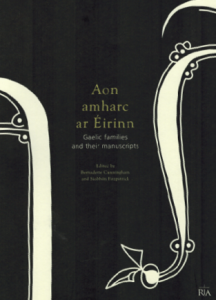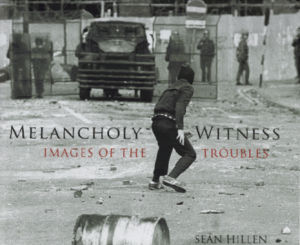Bookworm
Published in Issue 5 (September/October 2013), Reviews, Volume 21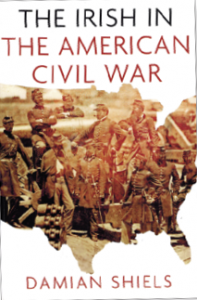 This year sees the 50th anniversary of JFK’s semi-legendary visit to Ireland (a subject we’ll be tackling in our Hedge School in the National Library on 22 October), but there is a far more significant event that links Ireland and the US: the American Civil War. Perhaps as many as 200,000 Irishmen fought in the Confederate and Union forces, which technically makes the American Civil War one of the most important conflicts in Irish history. It rarely gets the attention it warrants, and some years ago archaeologist Damian Shiels set up a popular blog to explain the subject in greater depth: http://irishamericancivilwar.com. Now he has expanded some of this material into a fascinating and vivid book, The Irish in the American Civil War (History Press Ireland, €20pb, 265pp, ISBN 9781845887681), which tells the story of the Irish engagement with the civil war through 24 individual stories, from the Tyrone man who challenged Abraham Lincoln to a duel to the Louth woman who pretended to be a man so that she could join the Union army!
This year sees the 50th anniversary of JFK’s semi-legendary visit to Ireland (a subject we’ll be tackling in our Hedge School in the National Library on 22 October), but there is a far more significant event that links Ireland and the US: the American Civil War. Perhaps as many as 200,000 Irishmen fought in the Confederate and Union forces, which technically makes the American Civil War one of the most important conflicts in Irish history. It rarely gets the attention it warrants, and some years ago archaeologist Damian Shiels set up a popular blog to explain the subject in greater depth: http://irishamericancivilwar.com. Now he has expanded some of this material into a fascinating and vivid book, The Irish in the American Civil War (History Press Ireland, €20pb, 265pp, ISBN 9781845887681), which tells the story of the Irish engagement with the civil war through 24 individual stories, from the Tyrone man who challenged Abraham Lincoln to a duel to the Louth woman who pretended to be a man so that she could join the Union army!
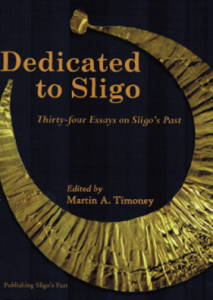 Local history is always a particular interest of Bookworm’s. A particularly impressive example of the genre is Dedicated to Sligo: thirty-four essays on Sligo’s past (Publishing Sligo’s Past/Wordwell, €40hb, 304pp, ISBN 9780957554702), edited by Martin A. Timoney, which ranges over a vast range of topics from prehistory to the present. A very different local history is Dermot McMonagle’s 29 Main Street: living with partition (260pp, ISBN 9780957477100), which examines the impact of the Irish Revolution and partition as experienced in and around Cavan in general, and Ballyconnell in particular. Moving away from Connacht and Ulster, the local history of Dublin is well served by Leaders of the city: Dublin’s first citizens, 1500–1950 (Four Courts Press, €45hb, 224pp, ISBN 9781846823473), edited by Ruth McManus and Lisa-Marie Griffith, which takes as its subject a selection of the often colourful and controversial individuals who have occupied the position of lord mayor since the office was established in 1229.
Local history is always a particular interest of Bookworm’s. A particularly impressive example of the genre is Dedicated to Sligo: thirty-four essays on Sligo’s past (Publishing Sligo’s Past/Wordwell, €40hb, 304pp, ISBN 9780957554702), edited by Martin A. Timoney, which ranges over a vast range of topics from prehistory to the present. A very different local history is Dermot McMonagle’s 29 Main Street: living with partition (260pp, ISBN 9780957477100), which examines the impact of the Irish Revolution and partition as experienced in and around Cavan in general, and Ballyconnell in particular. Moving away from Connacht and Ulster, the local history of Dublin is well served by Leaders of the city: Dublin’s first citizens, 1500–1950 (Four Courts Press, €45hb, 224pp, ISBN 9781846823473), edited by Ruth McManus and Lisa-Marie Griffith, which takes as its subject a selection of the often colourful and controversial individuals who have occupied the position of lord mayor since the office was established in 1229.
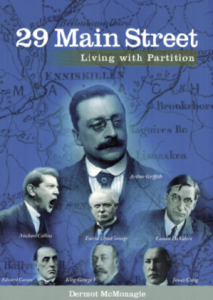 A book that doesn’t confine itself to any one part of Ireland is Ronald Cox and Philip Donald’s Ireland’s civil engineering heritage (Collins Press, €19.99pb, 296pp, ISBN 9781848891708). Ireland was never heavily industrialised (at least outside the north-east), but the development of its various infrastructures over the centuries ensures that the legacies of engineering prowess remain scattered across the Irish landscape. This beautifully produced (and exceptionally well-illustrated) full-colour book contains a great deal of material of interest to virtually all localities: it is arranged both thematically and geographically, with separate sections for all four provinces, Belfast and Dublin. Speaking of civil engineering and the growth of infrastructure, in the nineteenth century the rapid growth of Ireland’s extensive rail network was an obvious and influential phenomenon in economic, cultural and social terms. Those interested in Cox and Donald’s book might also be interested in a biography of one of the key figures in the development of the nineteenth-century rail network (and much more besides): Fergus Mulligan, William Dargan: an honourable life, 1799–1867 (Lilliput Press, €25hb, 300pp, ISBN 9781843513957).
A book that doesn’t confine itself to any one part of Ireland is Ronald Cox and Philip Donald’s Ireland’s civil engineering heritage (Collins Press, €19.99pb, 296pp, ISBN 9781848891708). Ireland was never heavily industrialised (at least outside the north-east), but the development of its various infrastructures over the centuries ensures that the legacies of engineering prowess remain scattered across the Irish landscape. This beautifully produced (and exceptionally well-illustrated) full-colour book contains a great deal of material of interest to virtually all localities: it is arranged both thematically and geographically, with separate sections for all four provinces, Belfast and Dublin. Speaking of civil engineering and the growth of infrastructure, in the nineteenth century the rapid growth of Ireland’s extensive rail network was an obvious and influential phenomenon in economic, cultural and social terms. Those interested in Cox and Donald’s book might also be interested in a biography of one of the key figures in the development of the nineteenth-century rail network (and much more besides): Fergus Mulligan, William Dargan: an honourable life, 1799–1867 (Lilliput Press, €25hb, 300pp, ISBN 9781843513957).
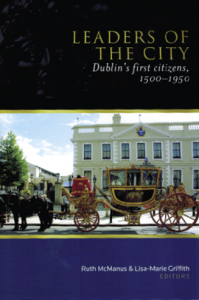 The Irish rail network began to develop in the 1830s, a decade in which Ireland was also governed by what was perceived to be a benign and relatively progressive liberal administration—so much so that when the chief secretary, George Howard, Lord Morpeth, stepped down in 1841 he received an unusual testimonial (with the blessing of Daniel O’Connell): a list of 157,439 signatures, collected on 652 individual sheets that were assembled to form a continuous roll 420m long (Jack Kerouac would be proud of it). It was stored in a wooden spool encased in a box that was only recently rediscovered in Morpeth’s ancestral home in Yorkshire. Given that it could serve as a pre-Famine census substitute this naturally attracted attention, and the roll is touring Ireland in 2013 under the auspices of ‘the Gathering’. The Morpeth Roll: Ireland identified in 1841 (Four Courts, €9.95pb, 144pp, ISBN 9781846824067), edited by Christopher Ridgway, is a lavishly illustrated book of essays explaining what the roll is, what its background was, and why it is significant. The book is a bargain at the price, not least owing to the wealth of illustrations. And speaking of well-illustrated bargains, we should really mention the latest exhibition catalogue from the Royal Irish Academy: Bernadette Cunningham and Siobhán Fitzpatrick, Aon amharc ar Éirinn: Gaelic families and their manuscripts (€5pb, 60pp, ISBN 9781908996220). The RIA retains the largest collection of Irish-language manuscripts in the world, and their current exhibition, drawn from their own collections, deals with the medieval and early modern native learned élites, focusing on history (seanchas), poetry (filíocht), medicine (leigheas), law (reacht) and religion (creideamh). The exhibition itself runs until 20 December 2013 in Academy House on Dublin’s Dawson Street; this catalogue is the perfect primer, and an ideal introduction to the RIA’s uniquely rich resources.
The Irish rail network began to develop in the 1830s, a decade in which Ireland was also governed by what was perceived to be a benign and relatively progressive liberal administration—so much so that when the chief secretary, George Howard, Lord Morpeth, stepped down in 1841 he received an unusual testimonial (with the blessing of Daniel O’Connell): a list of 157,439 signatures, collected on 652 individual sheets that were assembled to form a continuous roll 420m long (Jack Kerouac would be proud of it). It was stored in a wooden spool encased in a box that was only recently rediscovered in Morpeth’s ancestral home in Yorkshire. Given that it could serve as a pre-Famine census substitute this naturally attracted attention, and the roll is touring Ireland in 2013 under the auspices of ‘the Gathering’. The Morpeth Roll: Ireland identified in 1841 (Four Courts, €9.95pb, 144pp, ISBN 9781846824067), edited by Christopher Ridgway, is a lavishly illustrated book of essays explaining what the roll is, what its background was, and why it is significant. The book is a bargain at the price, not least owing to the wealth of illustrations. And speaking of well-illustrated bargains, we should really mention the latest exhibition catalogue from the Royal Irish Academy: Bernadette Cunningham and Siobhán Fitzpatrick, Aon amharc ar Éirinn: Gaelic families and their manuscripts (€5pb, 60pp, ISBN 9781908996220). The RIA retains the largest collection of Irish-language manuscripts in the world, and their current exhibition, drawn from their own collections, deals with the medieval and early modern native learned élites, focusing on history (seanchas), poetry (filíocht), medicine (leigheas), law (reacht) and religion (creideamh). The exhibition itself runs until 20 December 2013 in Academy House on Dublin’s Dawson Street; this catalogue is the perfect primer, and an ideal introduction to the RIA’s uniquely rich resources.
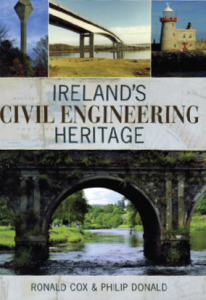
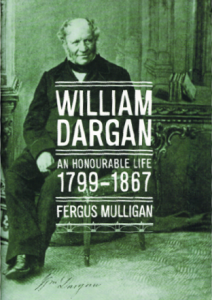
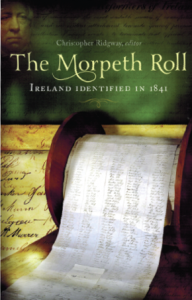
Finally, we come to more recent history. Seán Hillen is best known for his striking photocollage works, but between the 1970s and 1992 he also amassed approximately 700 photos of life in both his native Newry and across Northern Ireland. These are now deposited in the National Library of Ireland, and some of them formed an exhibition hosted in the NLI’s Photographic Archive in 2012, which has now been published as Melancholy witness: images of the Troubles (History Press Ireland, €25hb, 120pp, ISBN 9781845887940). As Hillen puts it, ‘there was no overall plan . . . the photos are very much my personal experience and vision’. Hillen has a good eye for the unusual: a young woman in country-and-western garb taking photos of an Orange march, or three young children in matching jumpers, each with an Easter lily pattern! There are vivid images of rioting and simmering tension, along with reminders of the human cost: pictures of the victims of plastic bullets, and of an emotionally drained Denis Faul speaking to the bereaved brother of a teenage girl killed by one. A great deal of human life is here and, all in all, the book offers a striking and vivid black-and-white chronicle of life during the Troubles. HI
